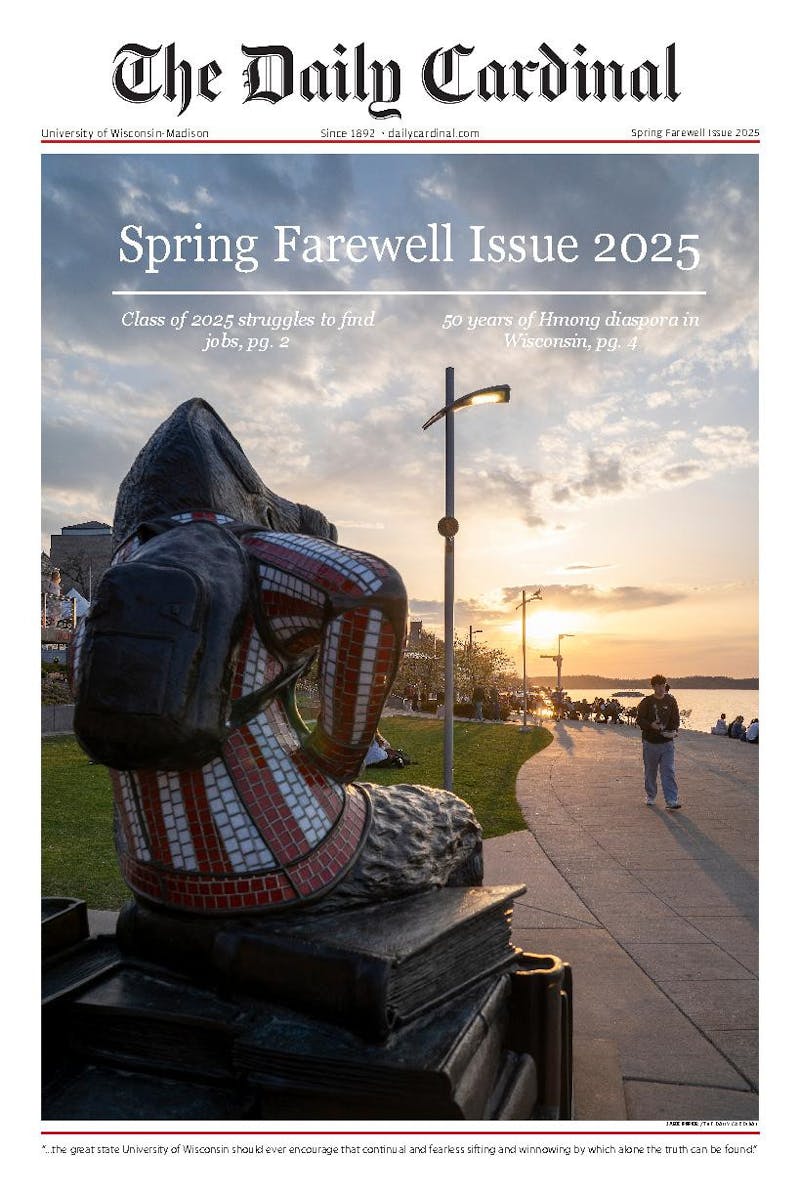Once the lid of the cannula was removed, I could smell the bacteria inside doing the digesting. A uniquely awful smell. As I reached my arm into the rumen, the feed the cow just ate was still in good-sized particles, yet to be fully digested. As my arm reached farther into the rumen, I began to feel the particles turned to liquid. The cow's rumen was churning, digesting around my rubber glove. The cow leaned toward me; this means she likes it. They told me she was feeling a ""good sensation.""
A herd of cows at the Dairy Cattle Center, located a short walk past Babcock Hall, contains cannulae, a rubber ring surgically inserted into a full-grown cow's rumen. Through this window in the side of its body, researchers and students can see into the cow's multi-chambered stomach to observe digestion. Researchers of the cannulated cows can also stick their entire arm into the cow's rumen to feel the cow digesting its feed, as researchers call it, ""roaming the rumen.""
""The first cannulated cow in the university's herd was probably done 40 to 50 years ago,"" UW-Madison dairy science professor David Combs said. ""These have been here a long time and been a key component in a lot of nutrition discoveries that Wisconsin is known for.""
Combs said the cannulated cows enhance education opportunities at UW-Madison as students do projects and lab exercises working with the cows.
""It's a pretty remarkable living laboratory because it shows students studying anatomy and physiology for farm animals how the stomach actually works,"" Combs said. ""Rather than just talk about it, students can see first hand the process going on.""
Observing the rumen, which herd administrator for the Dairy Cattle Center Mike Peters, refers to as ""a huge 55-gallon drum in the cow,"" answers questions such as what cows can digest, how long it takes to digest and what enzymes digest certain types of feed, such as alfalfa and silage.
""Cows can take something you and I can't eat and make it into a functional food source,"" Peters said. ""These cows are feeding the world, really. How we can do it more efficiently is important.""
With approximately 40 cannulated cows at UW-Madison, John Goeser, a graduate student in dairy nutrition, said researchers aim to use information from the cannulae to find ways to increase digestion efficiency in cattle. This is done by working with producers to develop easily digestable feed varieties, Combs said. The feed can then be sold to farmers to increase production.
""Our ultimate goal would be to have a cow make the most efficient utilization of feed to produce milk, or if it's a beef animal, to produce as much meat as possible,"" Goeser said.
Combs said while the procedure to insert the cannula into the cow looks dramatic, it is a rather simple surgery. Performed by a licensed veterinarian at UW-Madison and taking approximately 30 minutes, the procedure includes numbing the skin on the side of the cow, making a small cut and inserting the cannula.
The cow is standing and conscious during the procedure, Combs said, and incidence of minor infection or other problems is rare. Peters added cows receiving cannulae are milked in the morning before the procedure and again at night.
While the cannula is permanent and remains in the cow for the rest of its life, Peters insists these cows live healthy lives.
""We do everything in our power to make sure the cows are healthy,"" Peters said. ""I can't ask them, but the behavior we see show they are indifferent.""
Additionally, according to Peters, cannulated cows may live longer than regular cows because when the rumen is not full, researchers can tell something is wrong and take bacteria from another cannulated cows rumen to help the sick cow digest. Combs said bacteria from the cannulated cows is now donated to cows in commercial herds as well.
Peters said the influence of research on the cannulated cows reaches beyond UW-Madison. The cows serve a teaching purpose among 4-H students, for example, who come for roaming labs where cannulae are opened and students can roam the rumen. Research also helps farmers make healthy diets for their cows, Peters said.
Finally, Peters also said research on the cannulated cows has international exposure, working to increase production all over the world.
""The work we do here at UW is not just helping Wisconsin dairy farmers,"" he said. ""It's helping the whole world.""





